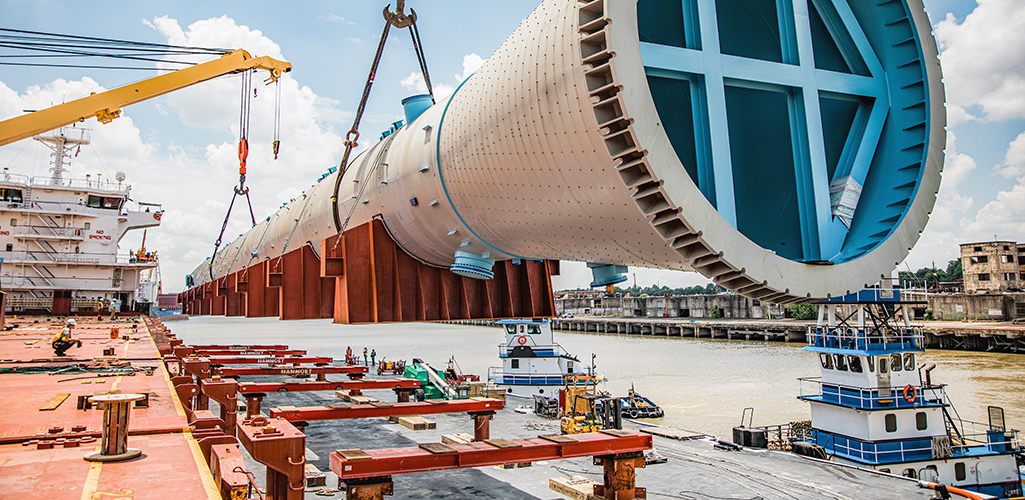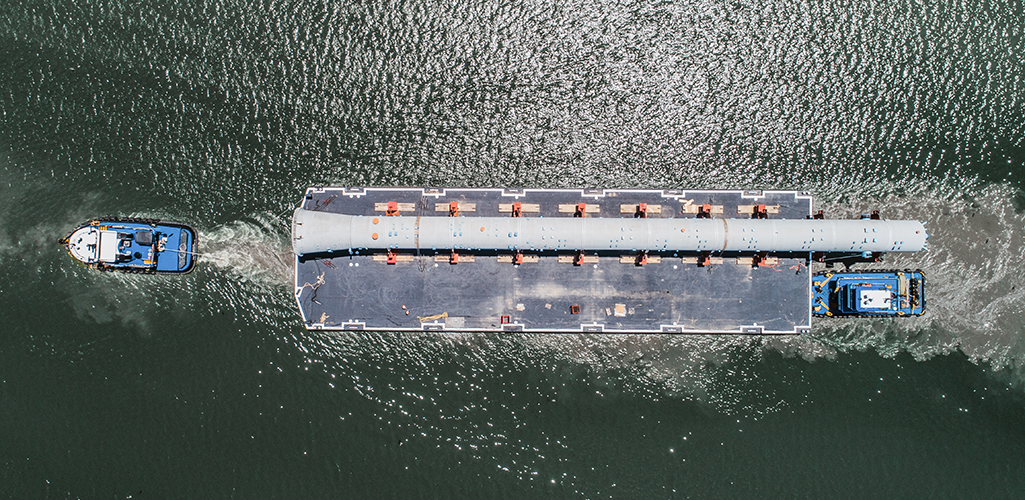Apr 14 | 2021
(Americas-Asia) Move Requires Customized Solutions

deugro recently completed transport of critical components from South Korea to the U.S. for a chemical expansion project.
The move involved a 485-tonne C6 column, about 92 meters long and 7.7 by 7.6 meters wide and deep, along with a 61-meter lights tower and 50-meter-long primary fractionator, as well as other refinery equipment, all totaling 967 tonnes.
The move required deugro to deliver customized engineering solutions and project manager, due to the cargo’s extraordinary dimensions and sensitivity.
The equipment was delivered by trailer to a general cargo vessel in Ulsan and, under supervision of the surveyor, were loaded onto the vessel by tandem lift of the two onboard cranes, which had combined lifting capacity of 800 tonnes.
“deugro’s project experts and dteq’s experienced transport engineers worked closely with the client and vessel’s crew to plan the shipment and ensure it took place safely and on time,” said Tobias M. Schultz, executive vice president of deugro.
Challenge Answered
Once the industrial cargo was loaded, lashed and secured, the vessel departed for the Port Houston’s City Docks. Once it arrived on-time, a barge was brought alongside the vessel, guided by two tugboats to maintain a specified offloading position while the cargo was carefully lifted off the vessel. Ballasting maintained the vessels stability, as multiple clearance checks followed safety protocol to ensure successful loading.
The C6 column was lifted directly onto stools on the deck barge using the same tandem lift process was safely placed for securing and inspection.
“A component of this size requires thorough analysis of all the various tasks and steps in the handling process to ensure a safe execution and delivery,” said Gert Jensen, senior vice president operations USA at duegro. “This includes analysis of vessel outreach, component support points, barge stability, lashing applications, etc. deugro experts and dteq transport engineers were involved from the early drawing review to the detail planning, method statement issuance and barge preparation to the on-site supervision and delivery – ensuring that all operations were in line with the documented operating procedures and highest QHSES standards.”
Developing a safe method to receive the 300-foot column on the 260-foot barge was the key challenge, considering the ocean vessel’s limited outreach, the required support points and tie down restrictions, as well as a safe plan for towing on the ship channel and across the shallow Scott Bay in Texas.
The C6 column hung over the barge’s stern by about 20 meters and needed to be strategically placed to ensure lashing following engineering plans and to achieve proper load distribution on the barge structure, said Franklin Alvarez, dteq’s regional head transport engineering Americas. “At the same time, a safe working space for the crew was ensured. All of this took place without having to double-handle the column with the vessel’s crane.”
Once the C6 column, lights tower and the primary fractionator were safely lashed and secured, the barges completed their 20-nautical-mile, five-hour voyage through Buffalo Bayou to Scott Bay, where they safely arrived at the dock.
“All the planning, attention to detail, and flexibility were key to managing this challenging and complex project move,” Schultz said. “The successful deugro and dteq transport was on time, within budget and without any QHSES incidents—according to deugro group’s slogan ‘Defining Logistics. Delivering Safety.’ ”



